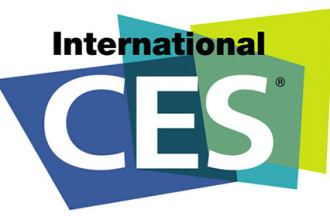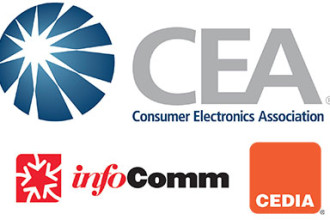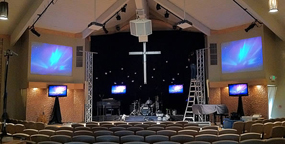CES 2015 Keynote Review
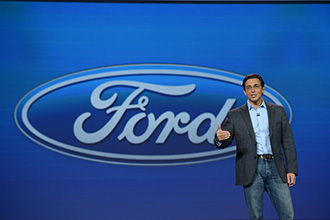 The next generation of technology innovation took the spotlight as the curtain rose on the opening day of the 2015 International CES. Day one of CES saw more than 3,600 exhibitors launching new products, and the leaders of Ford and Intel making major announcements and outlining their vision of technology innovation. Owned and produced by the Consumer Electronics Association (CEA), the 2015 CES is the world’s gathering place for all who thrive on the business of consumer technologies and runs through Friday, January 9 in Las Vegas, Nevada.
The next generation of technology innovation took the spotlight as the curtain rose on the opening day of the 2015 International CES. Day one of CES saw more than 3,600 exhibitors launching new products, and the leaders of Ford and Intel making major announcements and outlining their vision of technology innovation. Owned and produced by the Consumer Electronics Association (CEA), the 2015 CES is the world’s gathering place for all who thrive on the business of consumer technologies and runs through Friday, January 9 in Las Vegas, Nevada.
Gary Shapiro, president and CEO, CEA, kicked off the 2015 International CES by delivering the State of the Consumer Electronics (CE) Industry address Tuesday morning. He announced that revenues for the consumer electronics industry are projected to grow three percent in 2015 to reach an all-time high of $223.2 billion, according to The U.S. Consumer Electronics Sales and Forecasts, CEA’s semi-annual industry report released on Tuesday. He also reinforced the importance of a forward strategic path on innovation both for the industry and the world.
Mark Fields, president and CEO, Ford Motor Co., followed with his opening keynote address where he announced Ford’s new Smart Mobility plan, which promises to solve today’s global transportation challenges. The plan will leverage today’s connectivity, mobility and big data to operate 25 experiments around the world. Through Ford’s open source hardware and software, OpenXC, developers will be able to help Ford create solutions that provide a better customer experience, more flexible user-ship models and social collaboration. “Even as we showcase connected cars and share our plans for autonomous vehicles, we are here at CES with a higher purpose,” said Fields. “We are driving innovation in every part of our business to be both a product and mobility company – and, ultimately, to change the way the world moves just as our founder Henry Ford did 111 years ago.” Fields also unveiled Ford’s future plans to develop the next-generation of fully autonomous cars. The company is currently testing Fusion Hybrid, a fully autonomous car that uses existing technology from Ford’s semi-autonomous cars and includes LiDAR sensors to sense objects and advanced algorithms to help predict vehicle and pedestrian traffic. “Our priority is not in making marketing claims or being in a race for the first autonomous car on the road,” said Fields. “Our priority is in making the first Ford autonomous vehicle accessible to the masses and truly enhancing customers’ lives.”
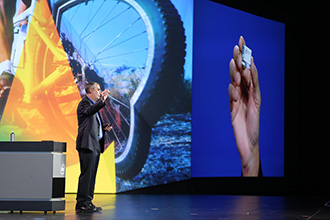 Tuesday evening, Intel Corporation CEO Brian Krzanich led his company’s keynote address by saying that 2015 will mark the next technology consumer wave. “We’re moving from a two-dimensional world to a three-dimensional world,” said Krzanich. “This additional dimension will change how we experience computing.” In citing three specific forces that will shape this next wave – Computing Unleashed, Intelligence Everywhere and The Wearable Evolution – Krzanich touted Intel innovations such as Real Sense, which can interpret depth, True Key, with recognition capability that eliminates need for passwords, and the Curie wearable, which can identify different sporting activities. On-stage guests included HP’s Dion Weisler, executive vice president of Printing & Personal Systems, who announced HP’s multi-jet fusion 3D printing will be powered by Intel’s processing; and Oakley CEO Colin Baden. Numerous live demonstrations during the keynote included an integrated Real Sense technology jacket that provides physical cues for persons with visual disabilities and a “game of drones” obstacle course with UAVs using Real Sense to avoid the obstacles. Krzanich concluded by discussing the importance of diversity and inclusion in technology, and announcing Intel’s creation of the Technology and Diversity Initiative.
Tuesday evening, Intel Corporation CEO Brian Krzanich led his company’s keynote address by saying that 2015 will mark the next technology consumer wave. “We’re moving from a two-dimensional world to a three-dimensional world,” said Krzanich. “This additional dimension will change how we experience computing.” In citing three specific forces that will shape this next wave – Computing Unleashed, Intelligence Everywhere and The Wearable Evolution – Krzanich touted Intel innovations such as Real Sense, which can interpret depth, True Key, with recognition capability that eliminates need for passwords, and the Curie wearable, which can identify different sporting activities. On-stage guests included HP’s Dion Weisler, executive vice president of Printing & Personal Systems, who announced HP’s multi-jet fusion 3D printing will be powered by Intel’s processing; and Oakley CEO Colin Baden. Numerous live demonstrations during the keynote included an integrated Real Sense technology jacket that provides physical cues for persons with visual disabilities and a “game of drones” obstacle course with UAVs using Real Sense to avoid the obstacles. Krzanich concluded by discussing the importance of diversity and inclusion in technology, and announcing Intel’s creation of the Technology and Diversity Initiative.
During Tuesday’s keynote panel, How Mobile Is Fundamentally Changing our World, tech leaders from across the industry discussed how mobile connectivity is transforming the industry and our lives. John Ford of CNBC hosted the panel discussion, which included Jan Brockmann, chief technology officer and senior vice president of Electrolux; Phil Abram, chief infotainment officer of General Motors; Steve Mollenkopf, CEO of Qualcomm Incorporated; and Jeroen Tas, CEO HISS of Philips. The five discussed a number of issues surrounding mobile connectivity such as privacy and data collection as well as the different sectors of our industry that are being transformed by ubiquitous Internet access, including the smart home, automobiles and the health care industry.
Day one of the 2015 CES also was filled with dynamic conference sessions and compelling SuperSessions examining issues and trends across the full technology ecosystem.
The Future of Robotics SuperSession, presented by Engadget, moderated by Michael Gorman, editor and chief, Engadget, included panelists Chris Anderson, CEO, 3D Robotics; Nate Harding, CEO and co-founder, Ekso Bionics; Dr. Werner Huber, head of driver assistance and perception, BMW Group Research and Technology; and Paolo Pirjanian, executive vice president, chief technology officer, iRobot. Panelists agreed that the powerful possibility of robotics can bring us from “reactive to predictive.” Panelists agreed robotics not only have the opportunity to touch people’s lives but the potential to be life-changing as demonstrated in the session by an individual with complete paraplegia who was able to stand and walk while wearing an exosuit from Ekso Bionics.
CNET’s always popular Next Big Thing SuperSession covered key topics including augmented and virtual reality. Moderated by CNET’s Brian Cooley and Tim Stevens, the session featured panelists Jens Christensen, CEO, Jaunt; Jeri Ellsworth, co-founder and chief hardware engineer, Technical Illusions; Palmer Luckey, founder and CEO, Oculus VR; and Ray Velez, global chief technology officer, Razorfish. The group noted that while gaming is currently the main vehicle bringing virtual reality to the market, it is not the end of virtual reality and the dynamic will shift as more content becomes available pushing the technology toward telepresence and video. When asked how augmented and virtual reality can both grow in the marketplace, the panelists agreed that the technology is already in place, but more content is needed. Luckey stated, “The first step is making a device that can make you believe you’re in a different place.”
The Welcome to the Era of Personal Entertainment SuperSession, presented by Ericsson, addressed the fact that the linear episodic viewing experience doesn’t cut it anymore, with viewers flocking to short-form, personalized, easily-shared and original content. Executives from AT&T, Indy Car, Fullscreen, Ericsson Group and Verizon said today’s viewers are on the move and on multiple screens, wanting to interact with their favorite movie stars and sports heroes on their own terms.
The Emerging Trends in Gaming SuperSession featured panelists discussing new opportunities for game developers. While the competition is fierce for developers, the panelists concurred that it is an extremely exciting time as well. Mobile, streaming, and 4K are driving much of the enthusiasm, but all eyes are on virtual reality as the most thrilling segment emerging in the industry.
Some 20,000 products will launch at the 2015 CES from major global brands to a record number of 375 tech startups in the Eureka Park Marketplace. Innovative products and technologies range from the latest in wearables, unmanned systems, health and fitness tech, robotics, 3D printing, sensor technologies and beyond.



